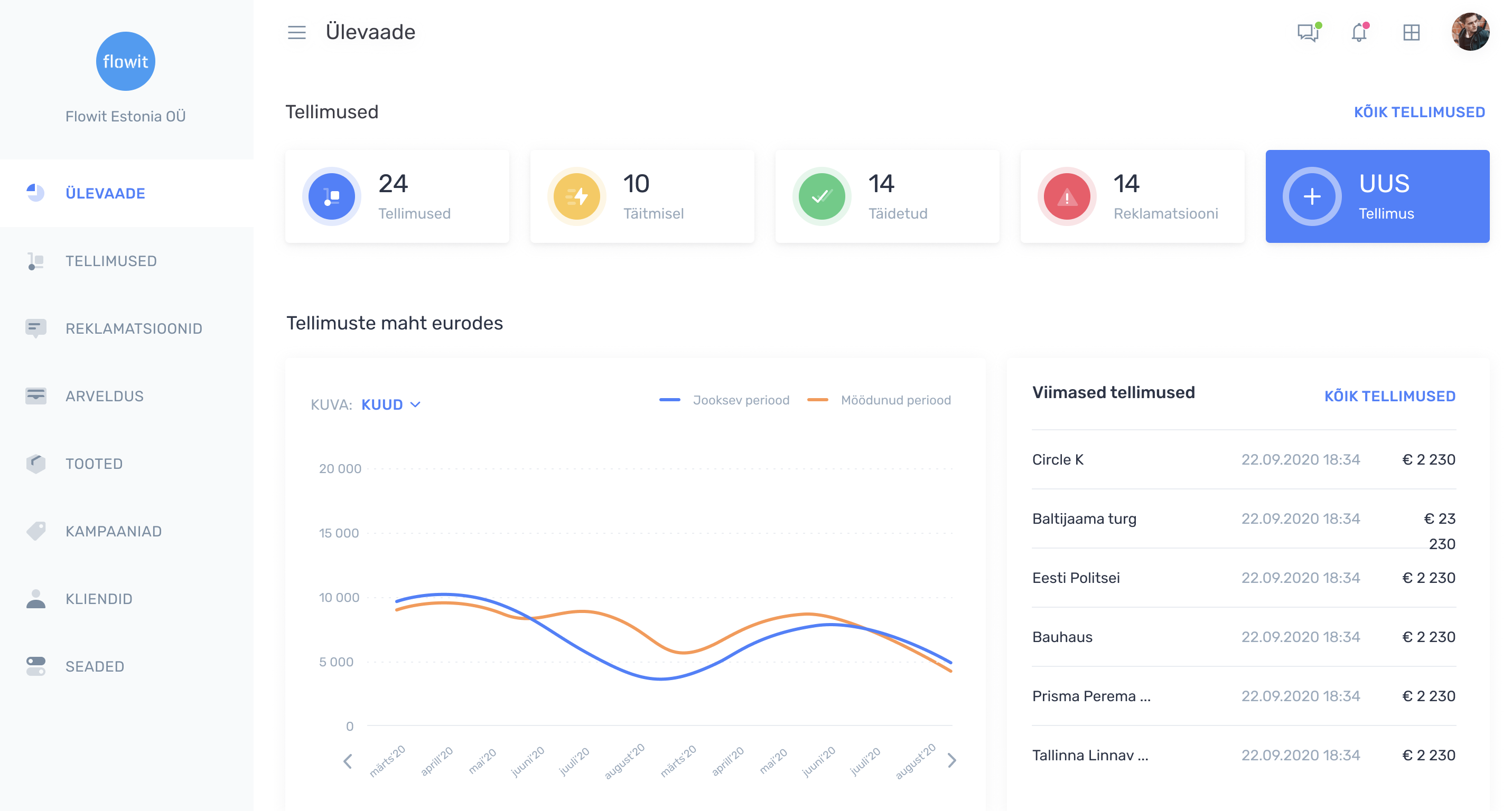This article was initially published by our client, Robby & Bobby, for whom we have built various accounting automation solutions.
In the second part of how to automate your accounting, we focus on making the exchange of purchase invoices and receipts automatic. Let us now have a look at whether you can give up receipts and how to simplify the process of entering purchase invoices and receipts into the accounting software.
We will view receipts and purchase invoices separately
A receipt is a confirmation of a purchase made from a store, an original document, which is mostly in paper form. Here are a few examples – I bought a box of sweets from the store for my business partner, refuelled the car, took a taxi, etc. A receipt may be paid by cash or card, using the employee’s own money or a company card.
Are receipts unavoidable or can we make do without them?
Dealing with receipts is annoying, as storing all the paperwork, collecting it and submitting to the accountant in a timely manner can be a real challenge even for the most punctual person. In addition to the fact that receipts tend to get lost, they are not everlasting, as information on them fades. It should also be borne in mind that receipts always mean extra work for the accountant because they have to be entered manually.
To reduce the number of receipts on paper, collect all the receipts from the last few months and analyse what purchases they are associated with. If possible, find a way to avoid receipts, for example:
- instead of taking a regular taxi, enter into a business customer agreement with Bolt
- enter into an agreement with a large chain of gas stations to receive a monthly invoice instead of making random purchases
- favour purchasing goods from places where you can pay by invoice (in case you had not heard, even Selver is able to issue regular invoices to be paid afterwards to companies).
Use a handy app for receipts you cannot avoid. Expensify is popular in the English-speaking world, while in Estonia CostPocket (former tsekk.ee) is used.
This is how things work in CostPocket. The purchaser takes a picture of the receipt by phone using a special application and adds a note whether it was paid using a company card or is to be reimbursed to an employee and presses the button. That is it! The employee may throw away the receipt and the information on the receipt will be entered into an accounting program electronically.
CostPocket can be connected to the most common program (Merit, Directo, Standard Books, etc.) Check out the longer list here: https://costpocket.com/et/kuidas
There are three different options for processing purchase invoices automatically:
- a digitisation service provider – software for both digitisation and purchase invoice management
- a digitisation service provider – digitisation only
- digitisation capabilities of the accounting software itself.
There are at least four digitisation service providers in Estonia – Omniva, Fitek, Telema (eFlow) and Envoice. Telema also has the capability to manage invoices (EDI solution), while others handle service invoices.
PS! If your business is a little larger, your invoices require approval from multiple people, and you have a precise cost allocation logic and multiple cost items, using an invoice management software program is definitely a good idea.
The logic of invoice management software:
- The seller sends a purchase invoice to an invoice management program either directly as an e-invoice or via email through a digitisation centre.
- The invoice management program marks the correct expense accounts and expense items for the purchase invoice, and an approval round can be used if desired. The invoice management software also serves as an archive for purchase invoices. In addition, you can send receipts to the invoice management program along with cost statements to have everything conveniently in one place.
- After making the entry and confirming it, information about the purchase invoice is sent to the accounting software program.
Approval round for purchase invoices
Approval round for purchase invoices means that an invoice can be approved by several people. In large companies, the use of an approval round can help speed up the invoicing flow significantly. It requires a considerable amount of time to carry around paper invoices with their approval folders or seek approval via email. In addition, the approval round may be quite big in large companies. First, the accountant adds the expense account and sends the invoice to the agreed approval round. Then the employee who made the purchase confirms the correctness of the invoice (adds cost breakdown information and comments, if necessary). Following this, the board member or the CFO will approve the payment of the invoice. Finally, the accountant reviews the data once more and forwards the invoice to the accounting software.
In smaller companies, the use of an approval round is primarily important for cost accounting. An invoice management system allows a company employee to correctly classify expenses. The employee who ordered the work knows exactly which project the purchase invoice relates to, unlike the accountant. Of course, information can also be forwarded via email, but this is far more error-prone and time-consuming.
- In a smaller company, only digitisation should be used, unless separate approval and addition of cost items is required. There is no point in making your life more complicated than it has to be.
- You can also use the accounting software’s own digitising capabilities – you send an invoice to the email address, it arrives in the accounting program, it is digitised (only by the program, the accountant checks and corrects it), and you use the invoice archiving function in the accounting program.
Disadvantages of this option:
- greater reliance on the accounting software – invoices are stored in the program and downloading them separately is bothersome (although Merit now has the option of downloading invoices from a certain period together in a zip file).
- currently, using only OCR (Optical Character Recognition) digitisation still provides poor quality (in digitisation service providers, a human reviews the files and makes corrections).
In addition, the company may not appreciate several employees having detailed information on the company’s finances. And accountants will definitely not like it if people without any accounting skills fiddle around in the program or accidentally corrupt something.
Possible issues when using an invoice management program
As with any program, errors can occur when using an invoice management program. Here are a few examples:
- a purchase invoice never reaches the invoice management program (sometimes an invoice can slip through the cracks on the Internet and never make it)
- the quality of the digitisation software is poor
- invoices move slowly through the digitisation centre (especially at the beginning of the month)
- cooperation between programs may fail (for example if the information is retrieved from a warehouse management program, data conformity must be checked from time to time).
Automation of bank transactions
If there is a small number of bank transactions and the transactions are not standard, they can also be entered into the accounting software manually. However, as the number of transactions increases, the easiest solution is to connect the accounting software with the bank via API (e.g. Merit is connected to Swedbank, SEB and LHV). This way you can send payment orders directly from the software to the bank and the bank, in turn, sends the information on receipts and other transactions directly to the software. It is fast, convenient, operational.
Remember that transaction information and the end-of-month balance forwarded via API must be checked.
Bank transactions are conducted once a day and are not yet completely automatic and in real-time, as they still require a confirmation from the accountant. We recommend that you reach an agreement with your accounting provider regarding at what time each day bank transactions from the previous day should be entered. In smaller companies, bank transactions could also be entered once a week, for example.
If the API is not directly connected, payment orders can also be sent to the bank in a file form – you prepare them in the program, save as a file, and import into the bank. Bank statements can also be downloaded as a file and imported into the accounting software. Although this is more cumbersome than the previous option, it is still a pretty convenient solution. Especially when transactions are simple, purchase and sales invoices have already been entered, and there are a lot of transactions.
If you want more information on automating purchase invoices and receipts then please contact us.
Also read the first post in the same series on automating sales transactions: How to automate your accounting? Part 1: Sales transactions





